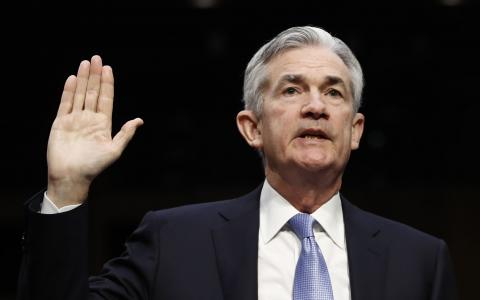
(Bloomberg) Friday’s jobs report never had a shot at truly mattering to the bond market.
In what’s usually considered a must-trade event, the Labor Department’s employment report Friday showed American businesses added 136,000 jobs in September, slightly missing the median estimate of 145,000 in a Bloomberg survey. Average hourly earnings rose just 2.9% from a year earlier, falling well short of expectations, but the unemployment rate hit a fresh 50-year low of 3.5%. So, all in all, largely status quo based on recent history.
In the wake of the data, the $16 trillion U.S. Treasury market didn’t seem to know what to do. That’s because even before the latest read on the labor market, this week was already jam-packed with crucial economic data, and markets had already reacted accordingly:
- On Tuesday, it was the Institute for Supply Management’s factory index, which measures U.S. manufacturing, falling to the lowest level since June 2009. Two-year Treasury yields plunged 8 basis points.
- On Wednesday, data from the ADP Research Institute showed private payrolls increased by 135,000 in September, the least in three months and less than the median forecast. Two-year Treasury yields dropped another 7 basis points.
- On Thursday, a gauge of employment in U.S. services industries swung into contraction for the first time since 2010, after the biggest two-month drop in a decade. Two-year Treasury yields tumbled 9 basis points.
For those keeping track at home, that’s a 23-basis-point swing in three days, to the lowest levels since 2017. The Treasury market has seen similar moves twice this year: in August, after the Federal Reserve cut interest rates and President Donald Trump ratcheted up the U.S.-China trade war less than 24 hours later, and in June, when traders freaked out about Trump’s threat to impose tariffs on all Mexican goods over illegal immigration. What do both of those have in common? The Fed lowered its benchmark lending rate during the following month.
So this chart of the market-implied odds of another Fed rate cut on Oct. 30 should come as little surprise. During the recent spate of bad economic data, the probability of a quarter-point reduction to the fed funds rate shot up to more than 80%, from less than 50% a week ago.
Simply put, bond traders made up their minds that regardless of what Friday’s jobs data showed, the central bank would have no choice but to cut interest rates this month, even though their median projection from last month was for no further reductions through 2020. After all, Fed Chair Jerome Powell has said time and again that his overarching goal is to act as appropriate to sustain the economic expansion. And the data this week flashed clear warnings of a potential slowdown.
Moreover, once the bond market becomes so sure of an impending Fed action, the central bank rarely makes an effort to dissuade traders. In early July, I questioned whether anything could delay a rate cut later that month, given the market’s certainty that it would happen. A week later, Powell cemented those expectations in prepared remarks to U.S. lawmakers, even though data steadily beat estimates over the course of the month. Effectively, the data-dependent central bank officials cherry-picked their figures.
There’s no question that this past week was a sharp reminder that the U.S. economy is in a somewhat tenuous position after the longest economic recovery on record. Citigroup Inc.’s economic surprise index is poised for its biggest weekly drop since early June.
What Fed officials have to ask themselves is whether further interest-rate cuts will make a difference for the country’s economic trajectory. On the one hand, the fed funds rate is the central bank’s one main policy tool, and if the economy is screaming out for help, then officials’ natural reaction should be to lower it. And yet, it’s not as if the cost of capital is what’s holding American businesses back from investing or hiring.
Debating about the “right” thing for the Fed to do is ultimately an academic exercise. Ascertaining what the Fed “will” do is what traders are paid to do. And they made up their minds well before waking up on jobs day.



